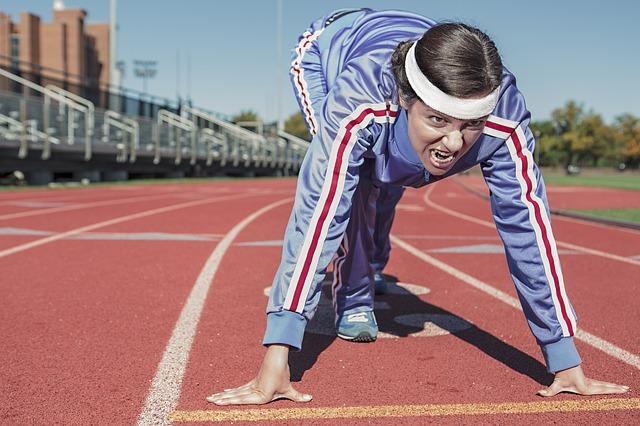Archive for November 2016
The Importance of Hip Mobility
Joint mobility can be a determining factor in overall health. While strength, speed and stamina are all important attributes, they may amount to nothing with compromised range of motions in crucial joints. The hip is a great example of this: sitting too much without proper attention to posture is a great way to weaken your glutes and shorten the hip flexors. Range of motion still needs to be accounted for and the lower back often picks up the burden. The lower back is a region meant for stability and thus, when it is called upon to initiate motions such as lifting, you have an injury waiting to happen.
Restoring range of motion to your hips is a matter of regaining what was lost: as children, we move innately and lift the proper way, using our hips and whole body as opposed to the lower back. Everyone has heard the maxim, “Lift with your legs,” and this could be taken to mean, “Use your hips!” A proper lift involves sitting or squatting with the hips to lower to the object and then using a thrust forward to lift it. Retraining your hips will help to activate the posterior chain of muscles that includes the glutes, the trapezius and posterior deltoids, so that you use these muscles to generate power and rotate as opposed to the lower back and knees.
Part of how we help at Hayes Family Chiropractic is through education; teaching the mechanics of the human body and how we can use them in harmony is an essential part of wellness that we would like to pass on to you. We can also provide you with the soft tissue work necessary for releasing muscles that have gotten used to chronic tension and show you exercises and stretches that will keep this region mobile and effective. It is time to stop rotating with the lower back and inducing needless physical stress with hips that aren’t passing muster; relearning how to use your hips in relation to the rest of your body can take you a long way toward healing and feeling less pain.
Dr. Chris Hayes, D.C.
Supporting an Anti-Slouch Lifestyle
“We are humans and thus we are lazy.” A philosophical statement that subscribes to the logic that humankind generally follows the path of least resistance. Whether or not laziness is inherent in human nature is a can of worms that we need not delve into further, but we will say that at Hayes Family Chiropractic, we have compelling evidence that, when it comes to posture, we are inclined to laziness.
As we move deeper into the information age, the age of the computer, we are slouching en masse: something about screens seems to draw our heads forward like a magnet which, incidentally, magnifies the weight of the head’s burden to the spine. When we practice this sort of shoulders scrunched, back slumped and head forward posture, we are contributing to a pension of back pain that will be waiting for us in old age. What’s worse, while average lifespan is increasing, age of onset for back problems is moving forward, which means we are going to be living longer, more painful lives? Wait a minute, that’s not what we want.
So how did we get here? In essence, it’s because slouching feels so right, even though it is so wrong. It’s just the natural position your body goes for because we are not striving actively to sit up straight. Even if you start with perfect posture, each minute passed is going to increase your likelihood of slouching.
Proper sitting posture (with a computer) looks like this:
- Computer screen at eye level
- Shoulders back and relaxed, not forward and scrunched
- Ears aligned with shoulders, head centered over spine.
- Sitting up straight with butt against the back of the chair
- Knees level with hips or slightly higher
- Feet flat on the floor.
Slouching is not cool and it’s about time we shifted this paradigm for good. While finding good posture may take hard work, it may be the best investment you can make for your lifetime well-being, especially if you are going to be working in front of a computer for the foreseeable future. We are here to help: helping to adjust your spine and get rid of nerve irritation, helping you strengthen and stretch the muscles that are necessary to hold good posture and teaching you what that good posture looks like in every phase of the day.
Dr. Chris Hayes, D.C.
Breathless
It’s time to slow down, for the sake of our cells! Americans are operating with lower lung capacities than ever before thanks to (mostly) human invented factors, among them pollution, lack of exercise, sitting for work and recreation, sitting with poor posture, and poor diet. While malefactors are on the rise, awareness of proper breathing technique is probably lower than ever- for an action that many humans perform up to 20,000 times a day, you would think that we should take it seriously. But breathing is subconscious in nature, and therefore, prone to another pitfall of human nature: our inclination toward laziness.
We are born breathing freely, but as time and age move ever onward, we seem to “unlearn” the process, forget about it, or cease to care. This means that you are capturing less oxygen and potentially expelling less CO2 than is necessary to keep your cells refreshed and your body energized. Some studies show that deskbound workers can go weeks without drawing a full breath or even using their diaphragm, the main breathing muscle, to breathe. In essence, you are using accessory muscles to draw in the bare minimum of breath required to survive, but not to thrive. Furthermore, the less we use our diaphragm, as with any muscle, the less effective it becomes.
So let’s try diaphragmatic breathing. Take a deep breath. Did your belly expand? If so, good! This means you are filling your lungs with air by contracting the diaphragm, filling the lungs from bottom to top and nourishing your cells with all the oxygen they need. Exhaling is also important: not expelling all the CO2 with each breath is what causes breathlessness. Keep breathing deeply, and exhaling fully and we think you will notice an uptick in mood and productivity. Breathing your way to better health is not as far-fetched as it may feel. It may begin with ensuring that there are no physical obstructions within your body that are preventing you from breathing effectively. From here, it is about slowing down and learning the proper technique and, in all these respects, we can help.
Dr. Chris Hayes, D.C.
The Core
The core is not one ambiguous muscle that is located in the center of your body, and it is certainly not just the abdomen, as certain fitness misinformation would suggest. Rather, the core is a complex network of muscles that work together to influence almost every waking movement we make as humans. The muscles of the stomach and back, from the sternum down to the pubic bone, make up the core and serve the following main functions: to protect and contain internal organs, enhance mobility of the spine and trunk, stabilize the body by transferring forces across the body without causing injuring and to coordinate the pelvic-lumbar region. Core stability is important because it generally also means spinal stability: we define a stable core as one that supports the spine and keeps the body balanced.
Compromised or weakened core musculature is consistent with a lifestyle that involves too much sitting and not enough exercise and this is a health concern because a weak core leaves you vulnerable to injury from daily motions (think gardening, tying your shoe, simply bending over or lifting). Your muscles simply don’t have the strength to transfer forces effectively between the upper and lower body, or from side to side, and injuries are likely in this scenario.
At Hayes Family Chiropractic, we want to help you establish your core as a stabilizer by focusing on strengthening and stretching that targets specific muscles, including the transverse abdominus and the Multifidus muscles, two muscle groups whose health often coincide with core strength. Stretches such as planks, side planks and dead lifts are excellent for strengthening core muscles to provide support for the rest of the body. If you are suffering from chronic back pain of any degree, it may be time to start looking for the underlying cause. We can help you develop a stronger, more stable core that will keep pain at bay and boost your well-being and all it takes is a phone call to schedule an appointment at our Dunedin office today!
Dr. Diane Hayes, D.C.
Are your Hamstrings in Need of Help?
A tertiary victim of a sit-heavy lifestyle is the hamstring. When we sit for hours on end, the hamstrings are in a constant state of contraction, causing them to shorten, which creates a pull on the pelvis that can cause misalignment in the lower spine. This leads us to problem 1: do you know what proper seated posture looks like? If you are like many Americans, you may be sitting with a posterior-tilted pelvis for hours at a time, exposing your vertebrae in the sacrum and lumbar region to myriad compression and misalignment problems. Learning how to sit, if you must sit all day, is an essential measure that we would like to see desk-bound workers take seriously. As it relates to the hamstrings, you may be feeling general low back pain while the problem is originating in the leg, but how could you know? A quick self-diagnosis can be done at home with either a straight-leg raise or reaching for your toes:
- Sit on the floor with one leg and foot extended, and one in the butterfly position.
- Reach toward your foot and try to touch your toes.
If you can’t touch your toes then chances are your hamstrings are tight. The degree to which this affects your life is variable: for some people it creates no problem at all but for others it can affect their posture, movement and musculoskeletal function. At Hayes Family Chiropractic, we work with you to determine if tight hamstrings may be causing dysfunction or pain and then help you solve it with spinal adjustment that accounts for any misalignment, and targeted stretching that will help release the region from tension. If you are in the Dunedin area, we urge you not to let your hamstrings hold you back from athletic endeavor or simply enjoying life any longer; call our office to schedule an appointment so we can start working on lengthening and strengthening those tight (or short) hamstrings.
Dr. Diane Hayes, D.C.
Your Neck: Friend or Foe?
The internet would have you believe that a sore, stiff neck is simply an unavoidable part of getting old. Indeed they are unavoidable if we choose to live more sedentary, immobile lifestyles; in this scenario, your pain is most likely a manifestation of several factors including strained muscles, injured ligaments and nerve compression. And while random flares of neck pain tend to get better on their own in a matter of days or weeks, pain is a signal that something is wrong and if you have recurring episodes of neck pain, it may be time to start listening.
Take a minute to admire the functionality of your neck; for movement and articulation of the head; for channeling blood to the brain and food to the stomach; among other things, the neck is a magnificent structure. Within that trunk the respiratory, lymphatic, nervous and immune systems operate in a state of fragility. Very few of pay attention to the neck before it exhibits signs of pain or stiffness and, by doing so, we are leaving it vulnerable to the physical and mental stress agents with which we live in close proximity. For some people who have reached their limit, it is time to stop reaching for the pain-muting pills, and seek a totally natural form of response to the problem.
Fortunately, chiropractic treatment is tailor made for the management and, in many cases, dissolution of recurrent neck pain. Chiropractic adjustment, performed gently and purposefully, help restore alignment to the vertebrae which allows for unimpaired nerve communication down the spinal cord. An example of this can be made out of the phrenic nerve, which powers the diaphragm (main breathing muscle), and is itself powered by nerves exiting between C3 and C5. A subluxation in this region can cause restrictions to the respiratory system as well as pain and stiffness due to nerve compression. Furthermore, trigger point therapy and massage can release muscles from epidemic tension, allowing you to feel looser and move with less pain. It’s time to take the health of the neck seriously, to prevent an old age full of more problematic conditions. If you are interested in protecting your neck, give our office in Dunedin a call and schedule an appointment today.
Dr. Chris Hayes, D.C.
Sitting Posture
As soon as posture is mentioned, most people sit up straight in attempt to look dignified, a slight look of shame on their face. But be honest and do a quick posture check: how are you sitting right now? Chances are that many of us are reading on laptops that rest on desks well below eye level, which is an almost certain way to lead yourself into the hunched over laptop pose shown above. This “laptop pose,” as you might call it, is characterized by shoulders scrunched forward and upward and a neck and chin leaning down toward the screen. This posture casts unreasonable pressure on the neck and shoulder muscles, as they attempt to compensate for the weight imbalance your head is imposing on the spine.
Proper seated posture looks something like this:
- Head facing straight forward, centered over the spine. This may mean adjusting the height of your monitor to account for this position.
- Back straight, buttocks touching the back of the chair and shoulders relaxed.
- A pillow or rolled up jacket can be useful for encouraging the lordotic curve.
- Weight of torso distributed evenly between hips
- Legs at 90 degrees or slightly higher
- Feet flat on the floor without too much pressure being pushed through them.
Even holding this “perfect posture,” for the entire time you are seated is not quite good enough. You must still find time to move around and free up the tension that accumulates when you spend significant time stagnant.
Sitting, besides already being the worst position for the spine, is the posture that most lends itself toward laziness, and thus the muscular imbalance and poor curvature that can develop as a result. Sitting up straight is not a maxim to be taken lightly; for those of us who spend hours a day desk-bound, it should be a rallying cry. At Hayes Family Chiropractic, we are your posture specialists. That is, we can help you find and establish proper posture throughout all phases of the waking day. Muscles in the core can be developed to help stabilize the body and lend a hand to the vertebrae and discs in the lower back which may be under fire from a sit-heavy lifestyle. Whether you need to heal damage that has already been done, or establish a seated lifestyle that will prevent it from occurring, we can help; give our office in Dunedin a call to schedule an appointment today.
Dr. Diane Hayes, D.C.





